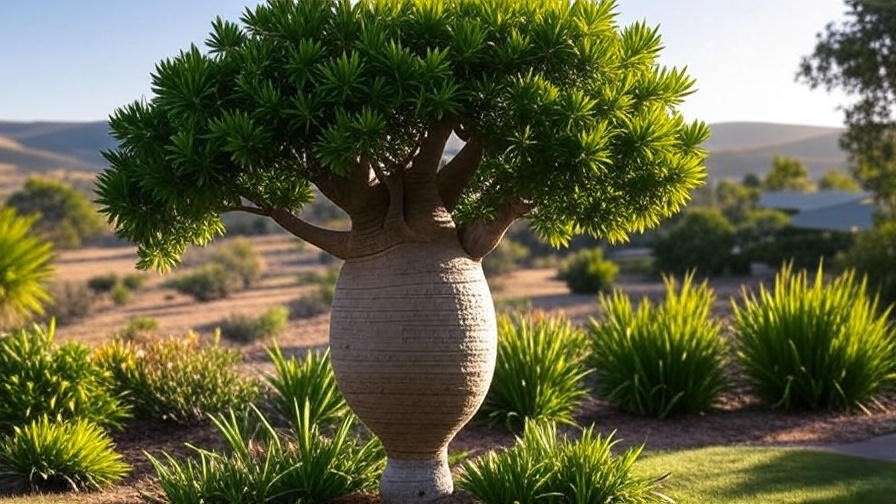Picture this: a quirky, bottle-shaped tree standing proudly in your garden, its swollen trunk a testament to nature’s ingenuity and its lush foliage a vibrant splash of green. The Queensland bottle tree (Brachychiton rupestris), a striking Australian native, is stealing the hearts of gardeners worldwide with its unique silhouette and low-maintenance charm. Whether you’re a seasoned horticulturist or a beginner looking to elevate your landscape, this drought-tolerant beauty is a game-changer. In this comprehensive guide, we’ll walk you through everything you need to know to grow and care for a Queensland bottle tree, from planting tips to troubleshooting common issues. Backed by insights from arborists and Australian native plant experts, this article will empower you to cultivate a thriving bottle tree that transforms your outdoor space. 🌞
What Is the Queensland Bottle Tree? 🌴
Botanical Background and Characteristics
The Queensland bottle tree, scientifically known as Brachychiton rupestris, is a deciduous or semi-deciduous tree native to Queensland, Australia. Renowned for its distinctive bottle-shaped trunk, this tree can grow up to 10–25 meters tall in its natural habitat, though it’s often smaller in cultivation. Its thick trunk serves as a water reservoir, allowing it to thrive in arid and semi-arid climates—a feature that makes it a standout in drought-prone regions. The tree’s vibrant green, lobed leaves and clusters of bell-shaped, cream-to-pink flowers add seasonal flair, while its woody fruit pods provide textural interest. 💧
Fun Fact: The Queensland bottle tree’s water-storing trunk has earned it the nickname “bottle tree” and made it a symbol of resilience in harsh environments. Its adaptability has made it a favorite in xeriscaping and sustainable landscaping.
Why Choose a Queensland Bottle Tree?
Why should you consider adding a Queensland bottle tree to your garden? For starters, its unique appearance makes it a natural focal point in any landscape, from sprawling rural gardens to compact urban courtyards. Its drought tolerance means less watering and lower maintenance, perfect for busy gardeners or those in dry climates. Additionally, the tree holds cultural significance for Indigenous Australian communities, who have historically used its water-storing trunk and fibrous bark for survival. Whether you’re aiming for an eco-friendly garden or a conversation starter, this tree delivers. 🌍
Ideal Growing Conditions for Queensland Bottle Trees 🌞
Climate and Hardiness
The Queensland bottle tree thrives in warm, sunny climates, making it ideal for USDA hardiness zones 9–11. It loves full sun but can tolerate partial shade, especially in hotter regions where afternoon shade prevents leaf scorch. This tree is built for heat and drought but can handle light frosts once established. For optimal growth, ensure good air circulation around the tree to minimize fungal risks, especially in humid areas.
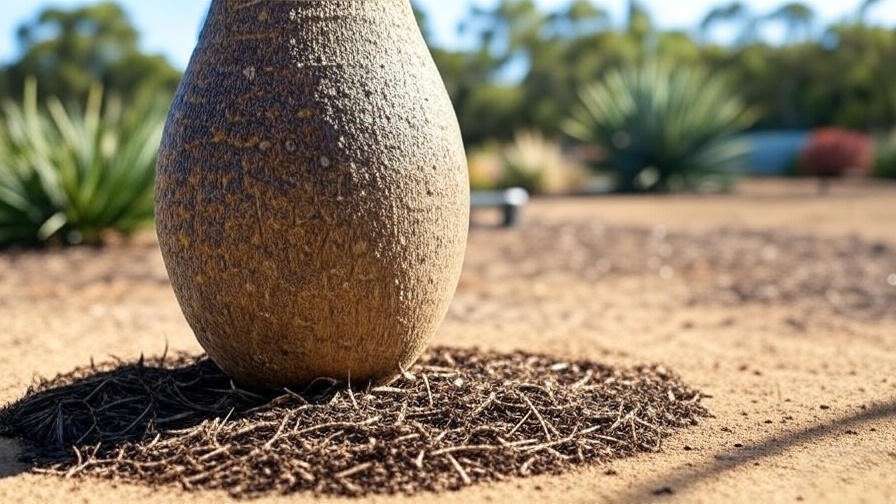
Expert Tip: If you’re in a cooler climate, consider growing your bottle tree in a container to bring indoors during winter. ❄️
Soil Requirements
Queensland bottle trees aren’t picky about soil but perform best in well-draining, sandy, or loamy soils. They can tolerate nutrient-poor soils, making them suitable for challenging landscapes. However, avoid heavy clay or waterlogged soils, as these can lead to root rot. Aim for a soil pH between 6.0 and 7.5 (slightly acidic to neutral). Before planting, test your soil’s drainage by digging a hole and filling it with water—if it doesn’t drain within a few hours, amend with sand or gravel.
Water and Drought Tolerance
One of the Queensland bottle tree’s superpowers is its ability to store water in its trunk, making it exceptionally drought-tolerant once established. Young trees need regular watering to develop strong roots, but mature trees can survive with minimal irrigation, even during extended dry spells. This makes them a top choice for water-wise gardens and xeriscaping projects. A Brisbane gardener reported their bottle tree thriving through a decade-long drought with only occasional watering—proof of its resilience! 💦
How to Plant a Queensland Bottle Tree 🌱
Choosing the Right Tree
Selecting a healthy Queensland bottle tree is the first step to success. Visit a reputable nursery specializing in Australian natives to find vigorous specimens. Look for a tree with a well-formed trunk, vibrant green leaves, and no signs of pests or disease. Avoid trees with yellowing foliage or damaged bark, as these may struggle to establish.
Expert Insight: “Always check the root system,” says Dr. Jane Wilson, a horticulturist with the Australian Native Plants Society. “Healthy roots should be white or light-colored and spread evenly in the pot.” 🌳
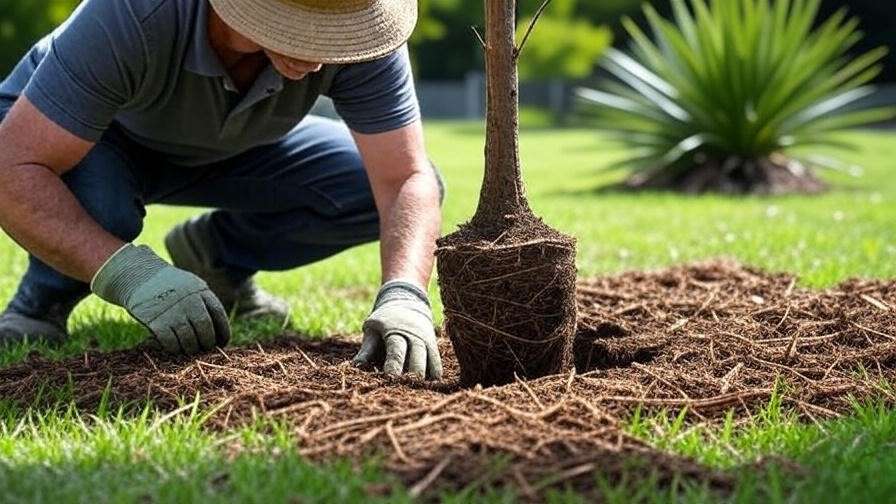
Step-by-Step Planting Guide
- Timing: Plant in spring or early summer when temperatures are warm, encouraging root growth.
- Site Selection: Choose a sunny spot with at least 6–8 hours of direct sunlight daily.
- Prepare the Hole: Dig a hole twice as wide and as deep as the root ball to give roots room to spread.
- Amend the Soil: If your soil is poor, mix in compost or a native plant potting mix, but avoid heavy fertilizers that can burn roots.
- Planting: Place the tree in the hole, ensuring the root collar (where the trunk meets the roots) sits just above ground level. Backfill with soil and tamp gently.
- Watering: Give the tree a deep soak immediately after planting to settle the soil and eliminate air pockets.
- Mulching: Apply a 2–3 inch layer of organic mulch (like bark or wood chips) around the base, keeping it 2 inches from the trunk to prevent rot.
Container Planting for Smaller Spaces
Don’t have a large garden? No problem! Queensland bottle trees adapt well to container growing, making them suitable for patios, balconies, or courtyards. Choose a large pot (at least 18–24 inches in diameter) with excellent drainage holes. Use a high-quality potting mix blended with perlite or sand for optimal drainage. Repot every 2–3 years to refresh the soil and accommodate growth. Water container-grown trees more frequently than those in the ground, but ensure the soil dries out slightly between waterings.
Ongoing Care and Maintenance 🧑🌾
Watering Schedule
Young Queensland bottle trees need consistent moisture to establish strong roots. Water weekly for the first year, ensuring the soil is moist but not soggy. Once established (typically after 1–2 years), reduce watering to once every 2–3 weeks during dry periods. Overwatering can lead to root rot, so always check soil moisture before watering. A moisture meter can help gauge when your tree needs a drink.
Fertilizing for Optimal Growth
Queensland bottle trees don’t require heavy feeding, especially since they’re adapted to nutrient-poor soils. Apply a low-phosphorus, slow-release fertilizer formulated for native plants in early spring. Look for a fertilizer with an NPK ratio like 3:1:5 to support healthy growth without encouraging weak, leggy branches. Alternatively, use organic options like compost or worm castings for a natural nutrient boost. Avoid over-fertilizing, as this can disrupt the tree’s natural balance.
Organic Tip: Spread a thin layer of compost around the base annually for a slow, steady nutrient release. 🌱
Pruning and Shaping
Pruning is minimal for Queensland bottle trees, as their natural shape is part of their charm. Remove dead, damaged, or crossing branches in late winter or early spring before new growth begins. Use clean, sharp pruning shears to make clean cuts, and avoid heavy pruning, which can stress the tree. If shaping is needed, focus on maintaining the tree’s iconic bottle form by trimming lightly.
Expert Tip: “Less is more with bottle trees,” advises arborist Tom Harper. “Over-pruning can reduce their water-storing capacity and weaken their structure.” ✂️
Mulching and Weed Control
Mulching is a game-changer for Queensland bottle trees. A 2–3 inch layer of organic mulch (e.g., bark, wood chips, or straw) helps retain soil moisture, regulate temperature, and suppress weeds. Keep mulch away from the trunk to prevent rot and pest issues. Regular weeding is essential, as weeds compete for nutrients and water. Studies show that proper mulching can reduce watering needs by up to 30%, making it a must for water-wise gardens.
Common Problems and Solutions 🐛
Pests and Diseases
While Queensland bottle trees are generally hardy, they can occasionally attract pests like scale insects, mealybugs, or caterpillars. Inspect leaves and branches regularly for sticky residue or small, waxy bumps. Treat infestations with neem oil or insecticidal soap, applied in the early morning or late evening to avoid leaf burn. Encourage natural predators like ladybugs or lacewings to keep pest populations in check. Fungal issues, such as leaf spot, are rare but can occur in humid conditions. Improve air circulation and avoid overhead watering to prevent fungal growth.
Environmental Stress
Signs of stress, like leaf drop, yellowing, or stunted growth, often stem from environmental factors. Overwatering is a common culprit—check for soggy soil and adjust your watering schedule. Poor drainage can also cause stress, so ensure your soil allows water to flow freely. Extreme temperature swings or insufficient sunlight may slow growth. If your tree shows signs of stress, test soil conditions and relocate container-grown trees to a sunnier spot if needed.
Troubleshooting Slow Growth
Slow growth is normal for young Queensland bottle trees, as they prioritize root and trunk development. However, persistent slow growth may indicate nutrient deficiencies, poor soil drainage, or insufficient sunlight. Conduct a soil test to check pH and nutrient levels, and amend with compost if needed. Ensure the tree receives at least 6 hours of direct sunlight daily. Patience is key—mature bottle trees often take 10–15 years to develop their signature shape.
Expert Insight: “Slow growth in bottle trees is a sign of strength,” says Dr. Wilson. “They’re building a robust foundation for long-term survival.” 🌳
Landscaping with Queensland Bottle Trees 🌳
Design Ideas for Your Garden
The Queensland bottle tree is a showstopper in any landscape, thanks to its sculptural trunk and lush foliage. Use it as a focal point in minimalist or desert-style gardens, where its unique silhouette can shine. Pair it with low-water plants like kangaroo paw, grevillea, or westringia for a cohesive, drought-tolerant design. For a striking effect, plant it in a rock garden surrounded by succulents or native grasses. Its bold form contrasts beautifully with softer textures, creating a balanced and visually appealing space. In larger gardens, consider planting a single bottle tree as a centerpiece or grouping several for a dramatic effect.
Example: A homeowner in Perth transformed their front yard by placing a Queensland bottle tree in a circular bed of river rocks, accented with native lomandra grasses. The result? A low-maintenance, eye-catching display that neighbors couldn’t stop admiring. 🌴
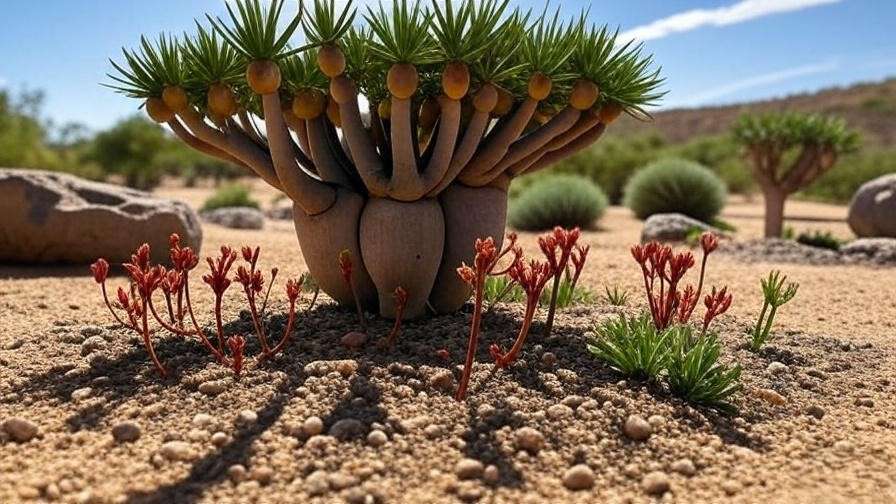
Urban and Small-Space Applications
Don’t let limited space deter you—the Queensland bottle tree is surprisingly versatile. In urban settings, it thrives in courtyards, patios, or as a street tree in sunny climates. For small spaces, grow it in a large container to add height and drama to balconies or terraces. Choose a pot with a wide base to support the tree’s weight as it grows. In a Sydney courtyard, one homeowner used a container-grown bottle tree as the centerpiece of a minimalist patio, paired with potted succulents and a gravel base. The tree’s compact size and striking form made it a perfect fit for the space.
Pro Tip: For urban plantings, ensure the tree has enough root space and sunlight to avoid stress. Regular pruning can keep container-grown trees manageable. 🏙️
Environmental and Cultural Significance 🌍
Ecological Benefits
The Queensland bottle tree isn’t just a pretty face—it’s an ecological powerhouse. Its flowers attract pollinators like bees and birds, supporting local biodiversity. In arid regions, its deep root system helps stabilize soil, preventing erosion. The tree’s ability to store water makes it a champion of climate resilience, thriving where other plants might fail. Additionally, its canopy provides shade, reducing ground temperatures and creating microhabitats for small wildlife. By planting a bottle tree, you’re contributing to a sustainable, eco-friendly landscape.
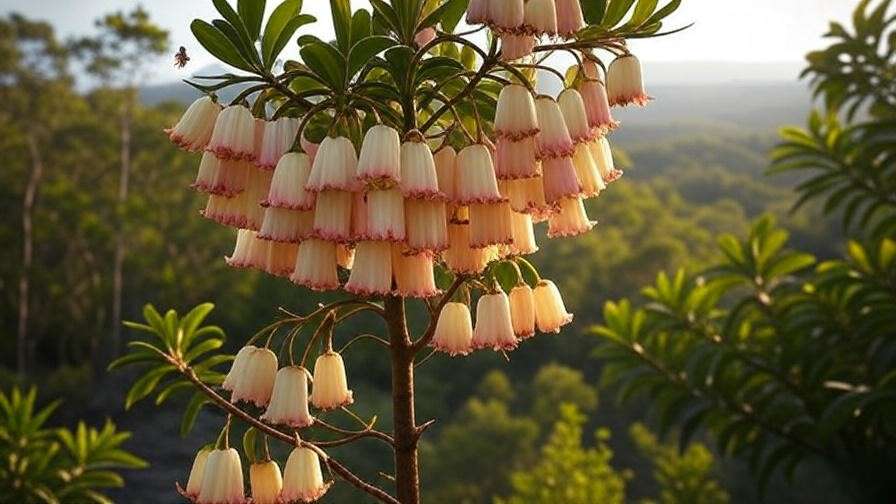
Fun Fact: A single mature bottle tree can sequester up to 200 kg of carbon dioxide annually, making it a small but mighty ally in combating climate change. 🌱
Cultural Importance
For Indigenous Australian communities, particularly in Queensland, the bottle tree holds deep cultural significance. Its water-storing trunk was a vital resource in arid regions, providing hydration during dry seasons. The fibrous bark was used to create tools, ropes, and nets, showcasing the tree’s versatility. In folklore, the bottle tree symbolizes resilience and adaptation, reflecting the strength of communities living in harmony with the land.
Expert Quote: “The Queensland bottle tree is more than a plant—it’s a cultural touchstone,” says Dr. Mia Thompson, an Indigenous botanist. “Its ability to thrive in harsh conditions mirrors the ingenuity of Australia’s First Peoples.” 🌿
Expert Tips for Long-Term Success 🌟
To ensure your Queensland bottle tree thrives for decades, follow these expert-backed tips:
- Monitor Seasonal Changes: Adjust watering and fertilizing based on seasonal weather patterns. In wet seasons, reduce irrigation to prevent root rot.
- Stake Young Trees: In windy areas, stake young trees for the first 1–2 years to support their developing trunks. Use soft ties to avoid damaging the bark.
- Join Local Gardening Communities: Connect with groups like the Australian Native Plants Society for region-specific advice and inspiration.
- Track Growth: Photograph your tree annually to monitor its progress and share your journey with other plant enthusiasts.
- Bonus Tip: Mulch with native materials like eucalyptus bark to enhance the tree’s natural aesthetic and support local ecosystems. 📸
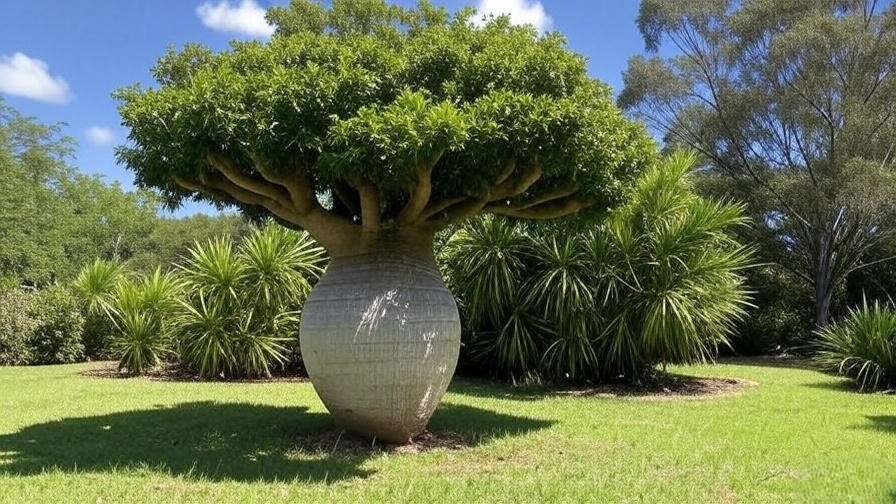
Frequently Asked Questions (FAQs) ❓
How fast does a Queensland bottle tree grow?
Queensland bottle trees grow slowly to moderately, typically adding 1–2 feet per year under ideal conditions. Growth rate depends on soil quality, sunlight, and water availability. Young trees prioritize root and trunk development, so don’t be alarmed if height gains are modest early on.
Can it survive frost?
Mature bottle trees can tolerate light frosts, but young trees are more vulnerable. In cooler climates, protect young trees with frost cloth or move container-grown trees indoors during winter. For best results, plant in frost-free zones or microclimates.
Is it safe for pets or children?
The Queensland bottle tree is non-toxic to pets and children, making it a safe choice for family-friendly gardens. However, discourage ingestion of leaves or sap, as they may cause mild stomach upset in rare cases.
How long does it take to reach maturity?
Expect 10–15 years for a Queensland bottle tree to develop its iconic bottle-shaped trunk and reach maturity. With proper care, these trees can live for decades, becoming cherished landscape features.
Conclusion and Call to Action 🌱
The Queensland bottle tree is a remarkable addition to any garden, blending low-maintenance care with stunning visual appeal. Its drought tolerance, cultural significance, and ecological benefits make it a standout choice for sustainable landscaping. Whether you’re planting in a sprawling backyard or a cozy urban patio, this guide equips you with the knowledge to grow a thriving bottle tree. From choosing the right specimen to troubleshooting pests, every step is designed to ensure your success.
Ready to bring this Australian icon to your landscape? Start your Queensland bottle tree journey today and watch it transform your outdoor space. Share your progress, photos, or questions in the comments below, or join our plant care community for more tips and inspiration! 🌳

